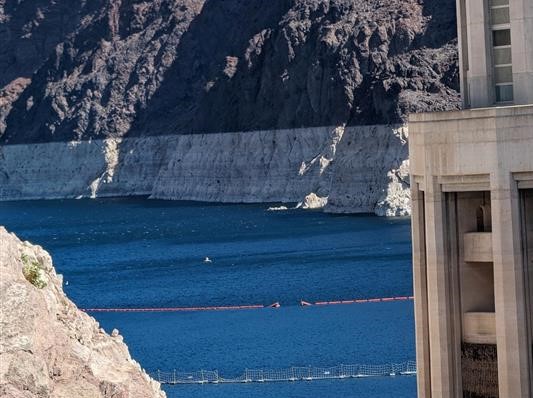
Though it occurred without much fanfare or media coverage, a significant milestone was reached on May 6 in the Colorado River’s near-term management when the U.S. Bureau of Reclamation (Reclamation) signed the Record of Decision (ROD) to guide river operations through 2026. Though an important step, it was exactly what was anticipated: Reclamation approved the plan submitted by the Lower Basin to conserve 3 million acre-feet (MAF) of water through 2026 to help the river. While the ROD simply confirmed Reclamation’s intent to implement the Lower Basin Plan when it identified the plan for near-term actions on the river as the preferred alternative in March, the significance of this latest milestone is worth a discussion.
First, a bit of background is in order (though many reading this would already know the background). In June 2022, as drought and climate change had led to dire conditions on the river, Reclamation called on the Basin states (and Mexico) to come up with additional reductions of up to 4 MAF to keep the river flowing for all users. California was the only state to offer conservation water with a plan to provide 1.6 MAF acre-feet (AF) over four years. This would be above any reductions already agreed upon through the 2019 Drought Contingency Plan.
Despite California’s offer (and with no other offers on the table), Reclamation implemented a process to develop a Supplemental Environmental Impact Statement (SEIS) to amend the 2007 Interim Guidelines (which manage the river through 2026). Even as conditions improved in 2023, (thanks to Mother Nature), Reclamation still moved forward with its SEIS, releasing a draft in 2023 with alternatives that called for mandatory reductions. Rather than face such cuts, the Lower Basin states came forward with a consensus-based approach to voluntarily conserve 3 MAF through 2026. That proposal led Reclamation to delay its SEIS process to allow time to review the Lower Basin Plan. Ultimately, Reclamation, as noted, adopted that plan as the preferred alternative and now has solidified it in the ROD.
This is significant in several ways. For one, the action proposed by the Lower Basin, which includes the original plan offered by California to conserve 400,000 AF annually through 2026, is built on voluntary conservation supported largely by federal funding. It also upholds the Law of the River and California’s senior rights. Equally important is that it is a strong example of what can be accomplished through a collaborative and consensus-based strategy that is mutually beneficial to both rural and urban communities. One more reason why this milestone matters is that it paves the way for the planning process already moving forward for the river’s long-term management post-2026.
The signing of the ROD does not end the process of developing near-term actions to bolster the river. There is more work to be done to develop the necessary agreements that will achieve the goals established in the amended guidelines. In 2023, critical agreements were reached to implement conservation only for that year. It entailed the Imperial Irrigation District (IID) and Reclamation signing a System Conservation Implementation Agreement for 2023. It also involved an agreement between the Water Authority, Metropolitan Water District and IID that involved the Water Authority providing 50,000 acre-feet of its 2023 conserved water supplies to help IID meet its targeted conservation goal. Reclamation paid for those 50,000 acre-feet through the Inflation Reduction Act. Additionally, to balance supplies within the San Diego region, the Water Authority obtained a like amount of water from MWD. Achieving such agreements, including similar agreements with other California parties, such as the Coachella Valley Water District, the Palo Verde Irrigation District, and tribes, required significant effort built on compromise and collaboration.
Looking ahead to this year and through 2026, it will continue to take that kind of collaboration to reach the next set of agreements. Whatever agreements are to come, we can, for now, recognize the significance of what occurred this month with the signing of the ROD for the river’s near-term management. Such milestones, while only a piece of the overall puzzle that is the complicated management of the river, still have value and set the tone for what is to come. As always, stay tuned for updates on the next pieces of the puzzle.